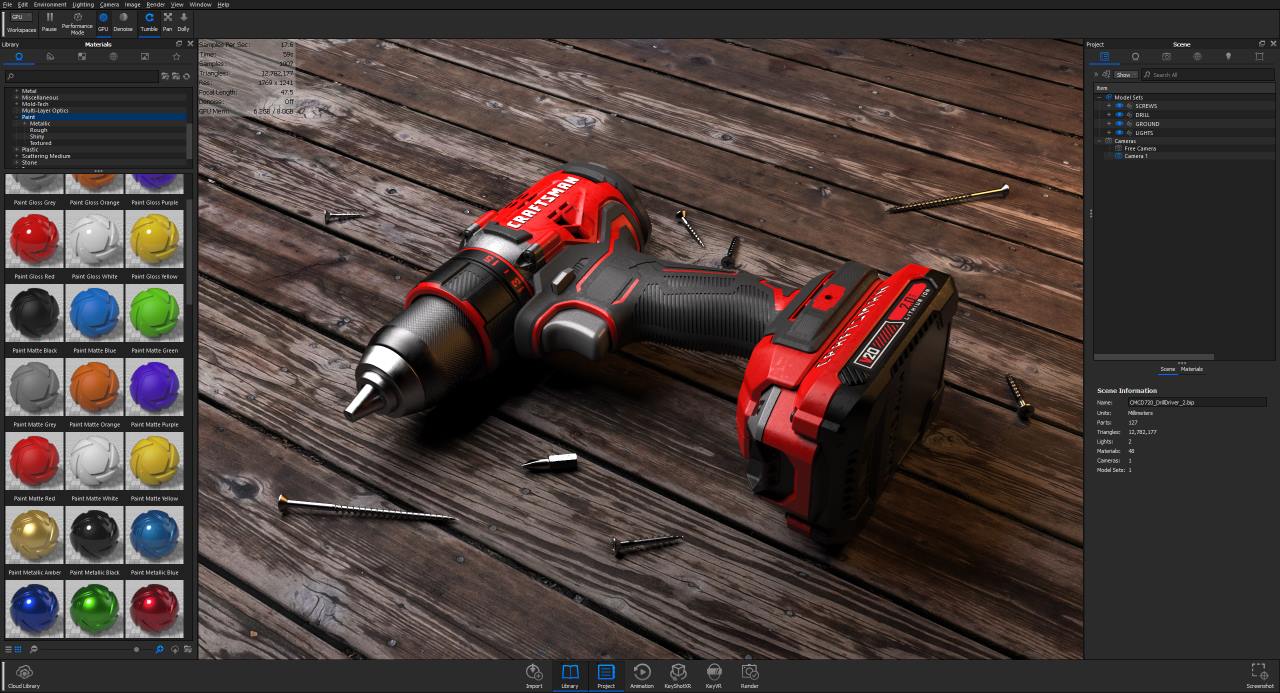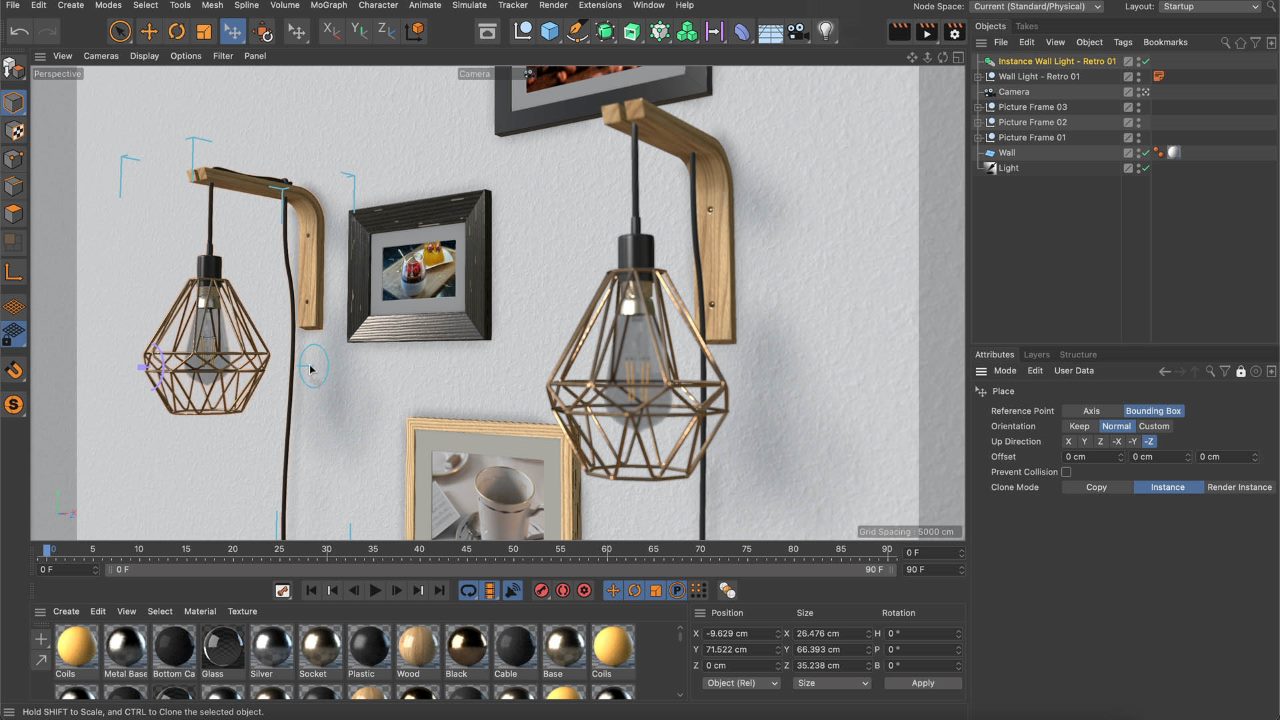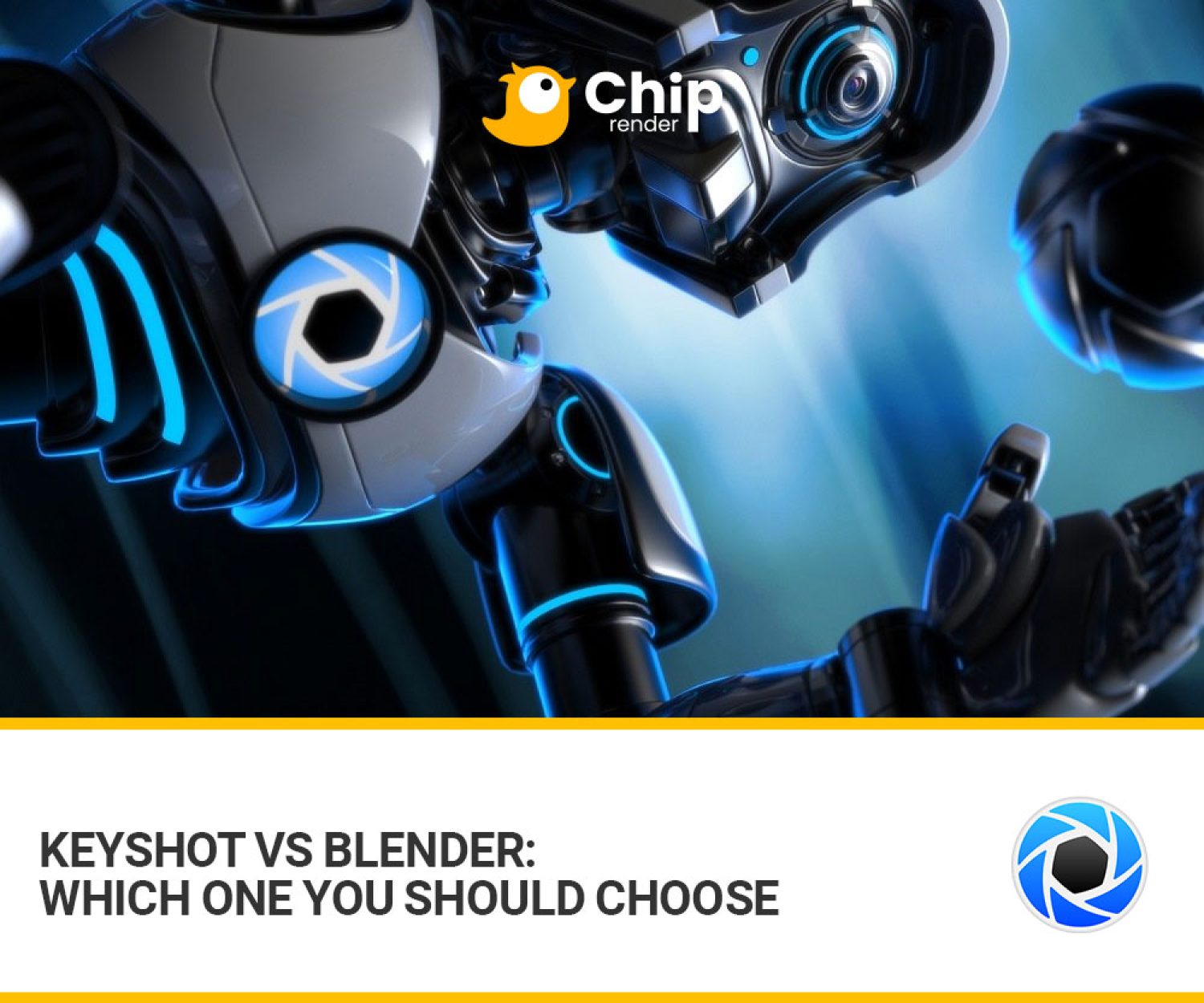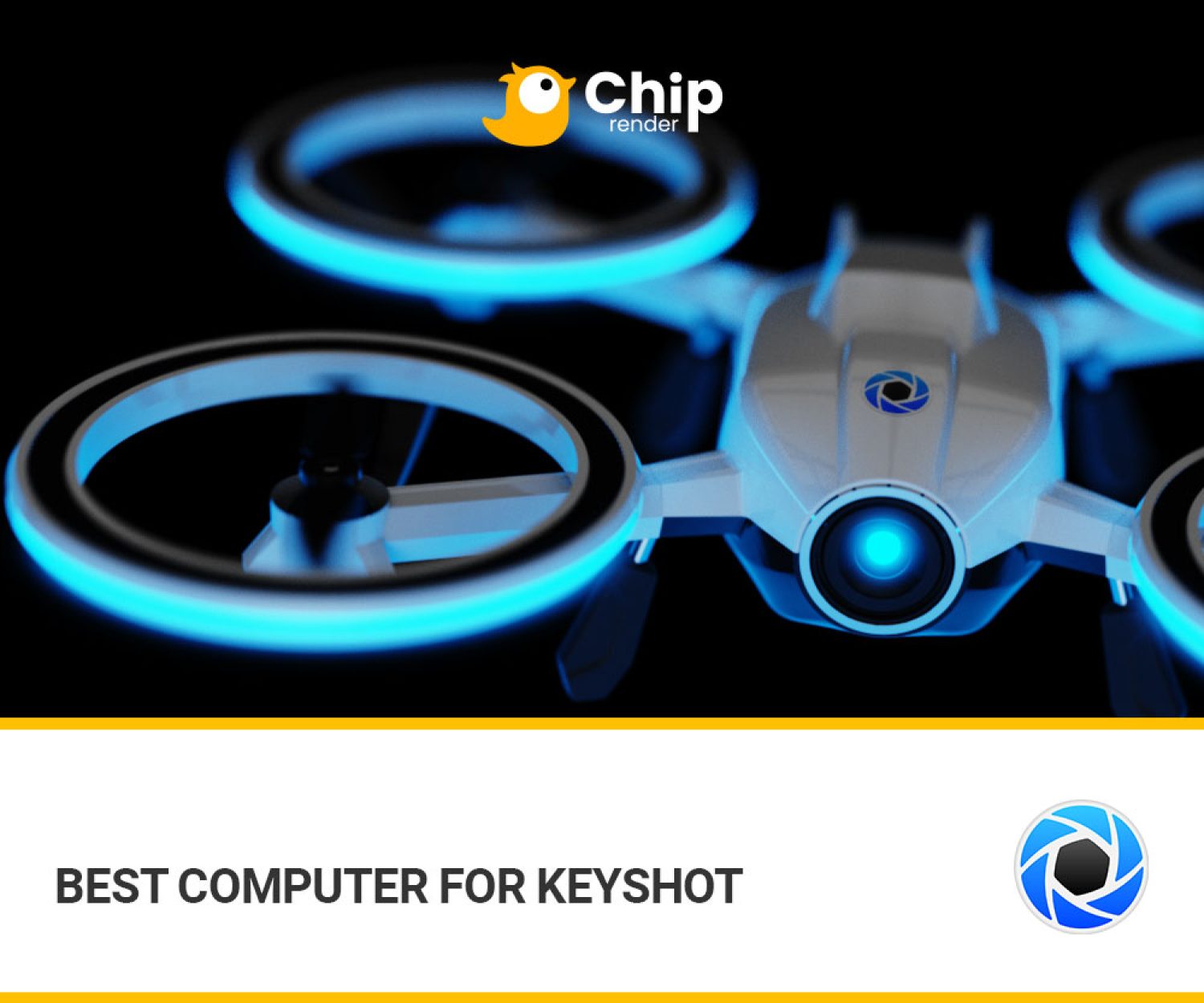In the graphic design and 3D rendering world, the choice of software significantly impacts the final product quality. Two popular tools in the industry, KeyShot vs Cinema 4D, have garnered a strong following for their capabilities in creating stunning visuals. Today, Chip Render will compare these two software to help you decide which one suits your needs best.
KeyShot vs Cinema 4D: What are they?
KeyShot
KeyShot is a leading real-time 3D rendering software developed by Luxion. It offers a user-friendly interface, efficient real-time rendering capabilities, and a focus on product visualization and rendering. As a result, KeyShot is popular for its speed and simplicity in creating high-quality renders, especially for product design and marketing visuals.
Cinema 4D
Cinema 4D is a 3D modeling, animation, and rendering software developed by Maxon. It’s known for its intuitive interface, powerful rendering engine, and a wide range of tools and features for 3D design, motion graphics, and character animation.
KeyShot vs Cinema 4D: How do they compare?
Application and Compatibility
KeyShot is aimed at design visualization, collaboration, and publishing. Thus, it supports the direct import of 3D models from various design software and provides plugins for applications such as SolidWorks, Rhino, 3ds Max, Maya, etc.
In contrast, Cinema 4D focuses on motion graphics and character animation. So it offers seamless integration with many software like After Effects, Adobe Illustrator, and plugins such as X-Particles, OctaneRender, Arnold, etc. Moreover, operated by Maxon, Cinema 4D is also compatible well with its ‘housemates’ ZBrush, Redshift, Red Giant, Universe, etc. Hence, diverse compatibility ensures your smooth workflow across various tools.

KeyShot image via keyshot.com
User Interface
KeyShot boasts a simple and straightforward interface that allows users to create high-quality renders quickly. Specifically, its drag-and-drop functionality makes it accessible to users of all skill levels.
Meanwhile, Cinema 4D offers an intuitive interface with a wide range of tools and features. Also, its interface is highly modular, allowing users to customize and arrange panels to suit their workflow. Together with a comprehensive toolbar and diverse tools for modeling, animation, and rendering, Cinema 4D requires a steeper learning curve for users.
Features
Firstly, KeyShot excels in quick and realistic rendering with a focus on materials and lighting. Indeed, it offers features like material templates, HDRI lighting, and a vast library of textures to facilitate the rendering process. Additionally, KeyShot offers one-click CPU to GPU mode shift, and real-time updates to speed up render time.
Secondly, Ciname 4D has tons of features for modeling, texturing, lighting, and animation. For this reason, this is a comprehensive tool for 3D design. Specifically, this software boasts ZRemesher tech, Redshift 3D, and a unified simulation system. In addition, its MoGraph module for motion graphics and character animation capabilities is especially notable. Obviously, Cinema 4D shines in advanced modeling projects.
Pricing and Licensing
KeyShot offers diverse license plans with different prices and access to different features. You can see more KeyShot pricing and licensing here.
- KeyShot Pro: $99/month
- KeyVR: $99/month
- KeyShot Web: $39/month
- Network Rendering: $32/month
- NX Plugin: $29/month

Cinema 4D rendering image via aecmag.com
On the other hand, Maxon offers 3 license packages for users to use Cinema 4D at different prices. See more about Cinema 4D pricing and licensing here. Below are the license prices for the annual bill presently.
- Cinema 4D: $59.91/month
- Cinema 4D + Redshift: $90.78/month
- Maxon One (Cinema 4D, Forger, Red Giant, Redshift, Universe, and ZBrush in One Bundle): $121.38/month
Moreover, these two software provide a trial version for testing capabilities before committing. Obviously, this is helpful to find out which one is more suitable for your project.
Community and Support
KeyShot offers a focused community primarily centered around product visualization and rendering, with a strong emphasis on materials and lighting. While Cinema 4D boasts a diverse and expansive community spanning multiple industries with a rich ecosystem of resources, tutorials, and support channels.
KeyShot vs Cinema 4D: Which one should you choose?
There is no best software for all 3D projects, it depends on your project’s requirements, deadline, budget, etc. However, we can suggest when you should choose KeyShot vs Cinema 4D for your stunning graphics below.
Why choose KeyShot?
| Pros | Cons |
| Easy to use for all users with simple interface and drag-and-drop functionality. | Lack of features for advanced animations |
| Seamless transition from CPU to GPU mode | Limited advanced input and output control, simulations, and hair/fur generation |
| Real-time updates for material, lighting, and geometry changes | |
| Native support for Apple silicon for enhanced performance |
Select KeyShot for projects that prioritize quick and realistic rendering, especially in product visualization scenarios. Also, KeyShot’s user-friendly interface, extensive material library as well as real-time rendering capabilities make it ideal for designers, engineers, and those focused on product aesthetics.

Keyshot stunning rendering capabilities image via architosh.com
Why choose Cinema 4D?
| Pros | Cons |
| Intuitive user interface with rich tools and features. | Expensive, especially for enterprise-level licensing. |
| Scene nodes enable stringing together objects and operations | Extensive feature set requires a steeper learning curve, especially for beginners |
| Compatible with advanced tech such as ZRemesher and Redshift 3D | Complex scenes require significant computational resources. |
| Diverse support community and educational resources |
Choose Cinema 4D for projects requiring versatile modeling, animation, and simulation tools, particularly in motion graphics, visual effects, and complex 3D projects. Undoubtedly, its advanced feature sets make it a preferred choice for professional users. In addition, the diverse community and support are essential for collaborative projects.
Final Thoughts
In conclusion, KeyShot vs Cinema 4D are powerful tools for creating stunning graphics with their own strengths and capabilities. For this reason, experimenting with trial versions of both software could help determine which tool best fits your creative vision. Ultimately, the best tool for creating impressive graphics is the one that allows you to bring your ideas to life with precision and creativity.
 Chip Render supports KeyShot and Cinema 4D with all versions and their plugins. You can build your own Workstation with our high-configuration 1/2/4/6x RTX 3090 servers at an affordable price from $2.9/hour. Join Chip Render to cut your rendering time several times and enjoy our 100% bonus promotion.
Chip Render supports KeyShot and Cinema 4D with all versions and their plugins. You can build your own Workstation with our high-configuration 1/2/4/6x RTX 3090 servers at an affordable price from $2.9/hour. Join Chip Render to cut your rendering time several times and enjoy our 100% bonus promotion.




